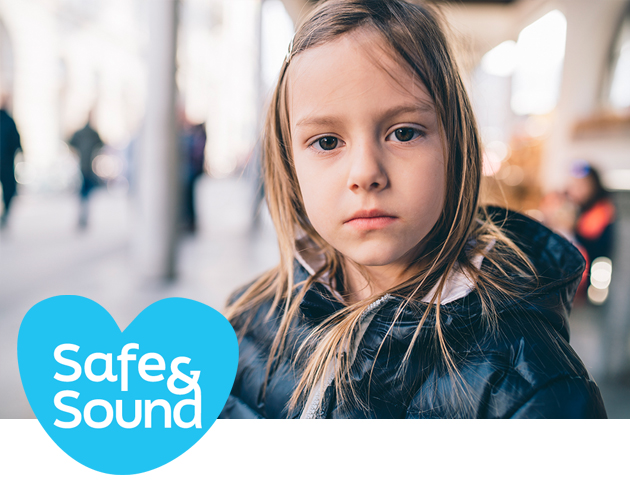- 541-734-KIDS (5437)
- Report Abuse

Welcome to Day 14 of Safe & Sound!
These past few weeks, we’ve talked about how to prevent abuse before it starts. But unfortunately, abuse still happens in our community. KIDS Center receives, on average, more than 500 referrals of potential abuse each year. The majority of our child abuse evaluations involve either child sexual abuse or physical abuse.
So how can we recognize when abuse is happening?
An abused child rarely presents physical signs of abuse. This is especially true of sexual abuse. Emotional or behavioral signs are much more common, but these signs are often confused or mislabeled.
When a child exhibits signs of abuse, sometimes their behavior is considered “disruptive” or they are labeled as the “bad kid”, particularly in school. What we need to understand is that a child’s brain is trying to adapt and handle trauma. For some kids, the abuse is an ongoing cycle of trauma. Consequently, many of the signs of abuse are also signs of trauma: difficulty sleeping, irritability, irrational fear or unexplained anger, depression, withdrawal, and early substance abuse, to name a few. Trauma often creates changes in behaviors and emotions. Kids experiencing the trauma of abuse are trying to handle adult situations without the adult capacity for emotions and behavioral control.
Kids who have experienced sexual abuse can also exhibit sexual behaviors or use terms that are not age-appropriate.
When you notice a child acting differently than before or “causing trouble,” they may be suffering right before your eyes. Learn to spot the signs and you have a better chance of recognizing a child in distress.
Say you’ve observed some concerning signs in a child. But maybe you’re unsure if you have a strong reason to suspect abuse. At this point, you can try to initiate a conversation with the child. But proceed carefully. Make sure you:
For adults: Download this simple worksheet to learn more about signs of abuse and open-ended questions. It should take you about five minutes to complete.
That’s it for Day 14! See you tomorrow for our final day!